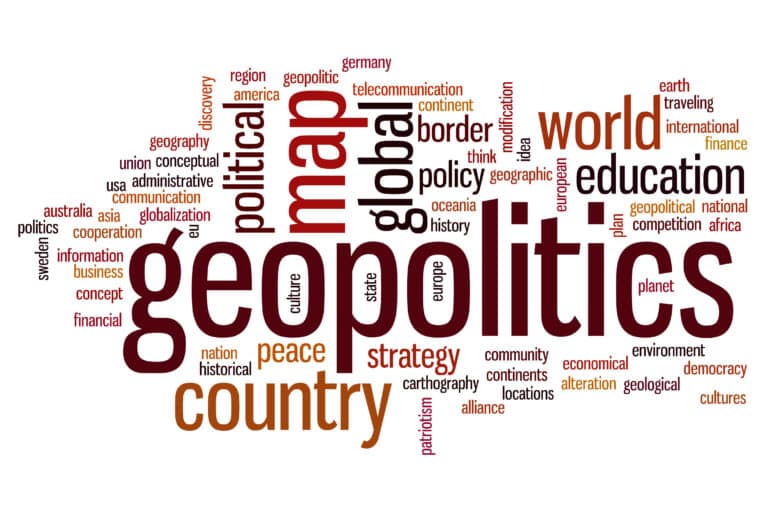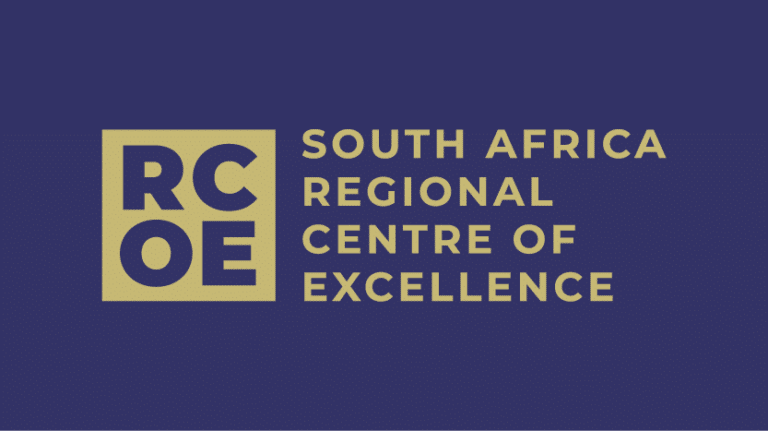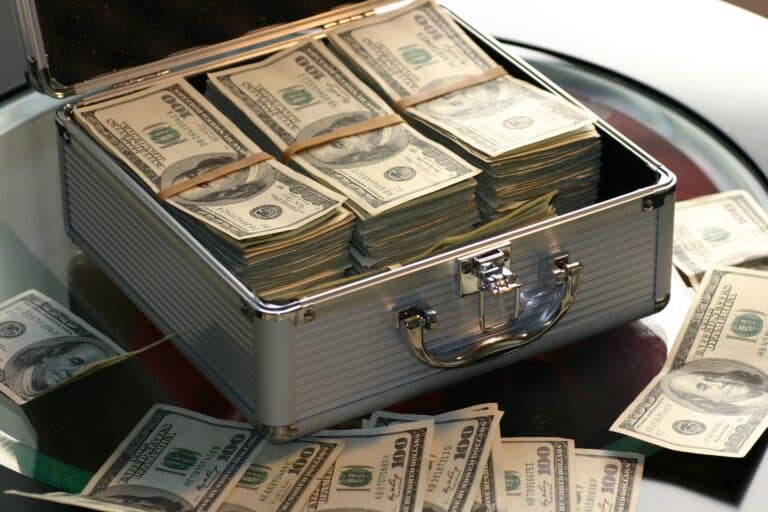Types of Corruption and Corrupt Activities
What is corruption?
Corruption covers a broad church of criminal activity that is typically concealed. It is designed to deliver personal or private gain or financial benefit to the perpetrator, or commercial or financial benefit to organisations.
Corrupt activity can occur anywhere there is a vulnerability that can be exploited and where people are in positions of authority and power who can abuse the trust placed in them. They will use the opportunity created by poor or no counter corruption strategies for their own personal or financial gain, or for the benefit of an organisation that is institutionally corrupt.
The end result of different types of corruption isn’t simply the loss of money or reputation if discovered. It has wide-reaching consequences, including human rights violations, war, and ultimately poverty whether localised or on a nation-state level.
Transparency International defines corruption as “the abuse of entrusted power for private gain. Corruption erodes trust, weakens democracy, hampers economic development, and further exacerbates inequality, poverty, social division, and the environmental crisis.”
Abuse of Entrusted Power
Abuse of power isn’t limited to embezzlement or money laundering though. It can include fraud, bribery, extortion, and other forms of corruption where the position of power can be used to cover such activities. It isn’t limited to elected officials, or government organisations either.
Entrusted power is imbued upon anyone who is in a position of seniority or authority. It is these people who have the opportunity to cover up their corrupt behaviours. They can take advantage where an organisation is vulnerable thanks to a lack of robust and effective counter corruption safeguards.
Jacob Zuma, the former South African President, is a prime example of an individual who was able to abuse his entrusted power. That is to say, the power given to him by the South African electorate upon his election to the Presidency. He was able to hide behind that position of power to embezzle and launder money and procure finance illegally by syphoning public funds to himself.
Bribery
Bribery can occur anywhere, whether that is in a government department, procurement process, or corporation trying to enter a new market, or win contracts. Organised crime gangs may bribe law enforcement officers, or anywhere that money, goods, favours, or something else changes hands that is outside the normal, legal, and accepted methods of securing a required action.
Bribery happens for two key reasons:
Supply-side bribery
This refers to people or organisations who solicit bribes. That could be a company offering to pay a bribe to enter a new market or win a contract. Or an individual in an organisation offering bribes without the knowledge of the organisation for their own personal gain.
Demand side bribery
This refers to the people or organisations who demand or receive bribes. That could be a government official demanding money to ensure a company or individual wins a contract.
Bribery requires both parties to be corrupt, and for both organisations to lack robust anti-bribery processes in place in the first place to counter corruption. Alternatively, an organisation could take the decision that bribery at corporate level is acceptable and that bribery is a part of doing business.
Organised Crime
There is no question that organised crime gangs are corrupt. They seek to protect and further their illegal activities through the corruption of law enforcement officials and others who can be encouraged to look the other way. These officials will typically take part in some way in their activities through bribery, coercion, or any number of illegal means.
Protection Rackets
Protection rackets, or racketeering, where criminal gangs (most notably the Mafia), demands money from a group, often shop owners or companies. In return, the criminal gang agrees not to harm them, and sometimes to protect them from rival gangs.
Police in many countries, including the UK, believe that protection rackets may still exist in the hospitality sector in pubs and clubs, despite the introduction of enhanced vetting of security personnel. The act of threatening an individual in exchange for safety or a promise not to damage property is extortion, while the collective group is the protection racket.
Money Laundering
Money laundering is perhaps best known as the activity of drug cartels and gangs but is not limited to them. Terrorist financing is also an area where money laundering exists. It is an activity where money has been procured illegally, whether through bribes and other corrupt activities or through illegal activities like drug dealing. Illegally acquired money is then put through a process that disguises its origin so that it appears to be legally acquired or earned. Hence the term “laundered”.
There are numerous techniques that can be used, including using “front” companies, laundering money through casinos, and investing in commodities like gold which can be moved between jurisdictions more easily than cash. They may also invest in and sell valuable assets like cars or property.
Corruption in Law Enforcement
Law enforcement agencies and officials are susceptible to corruption from criminals attempting to subvert the rule of law, and officials prepared to accept bribes, commit fraud or take part in other corrupt activities.
These activities can be separated into two groups; physical and personal.
Police brutality, torture, and abuse can be used for a variety of purposes. Police brutality is defined as the excessive use of force in a non-life-threatening scenario. The case of the death of George Floyd is a prime example of this.
Force can be used to extract confessions from people who may or may not be guilty, and to prevent people from reporting incidents or giving evidence. These are typically activities carried out on behalf of a criminal or organised crime gang and may include the solicitation of bribery to procure the services of a corrupt law enforcement official.
Corrupt law enforcement officials demonstrate clearly how entrusted power is abused for personal gain. But some officials may be the victim of coercion themselves to procure their services. They or their families could be threatened to ensure the desired outcome.
Terrorist Financing
The collection of funds for terrorist financing could come from legal or illegal sources. Money raised is directed to terrorist organisations for the purpose of carrying out terrorist activities against a population or organisations.
Sources of legal revenue could include oil revenue or trading in cryptocurrencies. Whilst the use of the money raised through these means is illegal, the way in which it is raised is not. Other illegal means could be financing from some governments, misuse of NGOs, coercion, and kidnapping, and other criminal activity like drug and people trafficking.
The terrorist organisation ISIS which established a caliphate in Iraq and Syria had a significant financial network combining legal and illegal sources of finance. It was only when this network was unravelled that the US-led coalition succeeded in scattering ISIS across the Middle East and pockets of Africa.
Extortion
In short, extortion is the act of obtaining something, most often money but could be goods, property, or other valuable items, through the threat of force or violence. It is most commonly found in organised crime.
Protection rackets are a form of extortion, as is blackmail, and more recently ransomware attacks. In this case, a threat actor or hacker successfully installs ransomware software on the computer or system of the individual or organisation that they are targeting. They are then able to access information, assets, and financial information about the owner of the computer to make threats of activity that they will carry out if their demands are not met.
Victims can have personal photography or video seized and returned after payment is met, right up to the boardroom where hackers can seize and freeze computer systems or remove data vital to operations. This activity has become something that now takes place between nations as well as organised crime and criminal gangs.
Coercion
There are similarities between coercion and extortion in as much as someone is threatened in order to extract something, usually money. However, coercion is a more complex matter.
Deterrence and Compellence, written about by Thomas Crombie Schelling in his 1966 book, Arms and Influence are widely regarded as the two distinct types of coercion.
Deterrence
In simple terms, a threat is made to prevent someone from doing something. That could be to not report corrupt activity and something won’t happen, typically a violent act, or blackmail.
Compellence
A threat is carried out until the victim does something. So someone could be coerced into a corrupt act because a family member has been kidnapped and will be released once the required action has been completed.
While Schelling was interested in the concepts of coercion from a military point of view, the theory is that coercion is about creating incentives for someone to force them to act in a particular way.
Fraud
Fraud is a corrupt practice whereby an individual will make a false representation of the facts about themselves, a service, or an achievement. These false statements are used for the specific purpose of gaining something, usually money or assets, that they may not have been able to secure had they not made their false claim.
There are numerous examples of fraud, including providing false information such as age to secure a driving license, and withholding information like criminal history to secure a job. In business and the public sector individuals may commit fraud to further careers, or to secure contracts that they might otherwise not have been able to if they had not provided false information. The Volkswagen emissions scandal is a good example of creating false information to drive, in this case, sales of cars.
Collusion and Cartels in Public Procurement
Cartel activity is a criminal offence in most jurisdictions. It is defined as the collusion between two or more organisations who make agreements when bidding for contracts, and pricing for goods or equipment. It is often found in public procurement but can happen anywhere, and breaks competition and trust regulations and law. Cartels often mean that prices are artificially raised, usually higher than the market price, and can only happen when genuine competition is stifled by such activity.
However Organisations might also collaborate on bids or through joint ventures which would be disclosed to the customer, and in this case, would not usually breach any cartel or antitrust law.
There are four notable types of collusion that could give bidders undue advantage:
Cover Pricing
A business can’t submit a bid because they are too busy but want to stay on the bidder list. They put in a bid that they know that will be higher than their competitors so they deliberately don’t win the business. To do this they actively find out what the competing bids will be.
Loser’s Fee
Bidders all submit genuine bids to win a contract but all agree to add an extra sum. The winner of the bid shares this additional sum with all of the losers to compensate them for the cost of their bids.
Price Fixing
Competing bidders put in their own competitive bids. But they all agree that they will never put in a bid for the same costs or services that fall below an agreed level.
Bidding Cartels
Bidders agree on who will win a contract, so there is no competition. The agreed winner can put in a higher bid because competitors are helping them to manipulate the tender process.
Embezzlement
Someone who has access to finance, property or assets belonging to someone else but does not have ownership of them and subsequently steals part or all of those assets is committing embezzlement. There are numerous cases of people caring for vulnerable people embezzling money from the person they are caring for.
On a larger scale, public officials, where effective counter corruption safeguards do not exist, may embezzle public money. Former South African President Jacob Zuma and officials in countries such as the Russian Federation are good examples of public officials embezzling money.
Corruption in All Its Forms
Corruption occurs in all its forms in civil society. It may relate to the procurement or acquisition of money, goods, and services, or other assets by individuals, corporations, public officials, or the public sector.
Depending on the scenario different types of corrupt activity may be utilised to achieve the end goal. Private sector corruption will manifest in a different way to corrupt activities in organised crime, for example.
The end result is the same though. Members of the public become victims whether through poverty caused by public sector corruption or officials like Jacob Zuma. Or private sector organisations misusing public money, fixing procurement processes, or bribing officials to win contracts or enter new markets. Crime and lawlessness caused by organised crime gangs not only cause localised poverty but lawlessness and fear if left unchecked.




